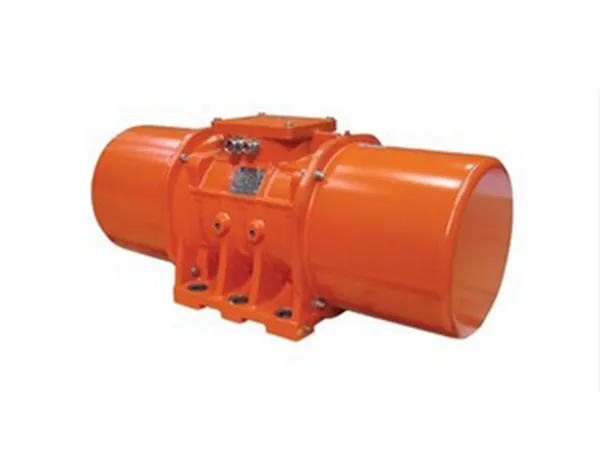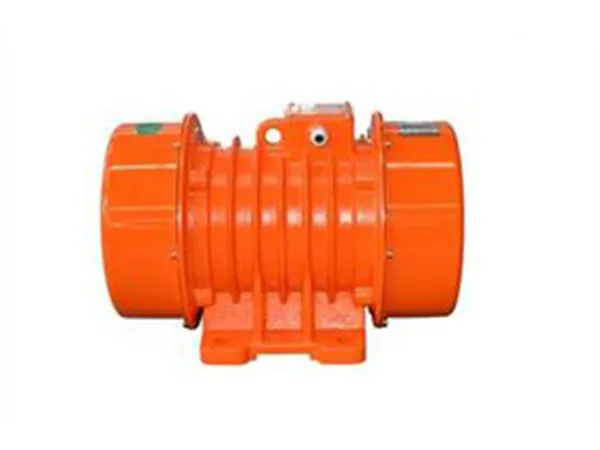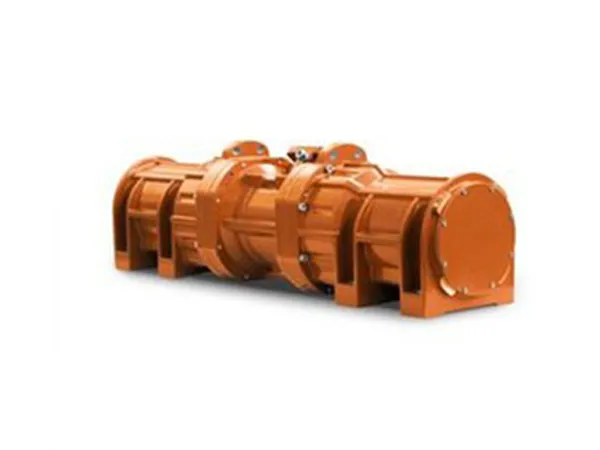
The VL series vibration motors are a range of specialized electric motors designed for generating controlled vibrations in various industrial applications. These motors are known for their reliability, durability, and efficiency, making them suitable for integration into equipment such as vibrating screens, feeders, conveyors, compactors, and sieves.
The VL series vibration motor is installed on the vibrating machine, with a unique slender rod as the structure, and the excitation force is transmitted through the base of the machine base. Therefore, compared with the prior art, it has the following main advantages:
1. The motor is a high-frequency motor with small motor amplitude, high efficiency, lower temperature rise of the stator winding, and stronger motor adaptability.
2. Since the base is made of nodular cast iron, the body has high strength and good mechanical properties.
3. Since the base is a long cylindrical structure (similar to a slender rod structure), the distance between the excitation force action point (the distance of the foot hole) is relatively wide, especially for places that require a wide distance to transmit the excitation force Be applicable.
4. Special bearings for vibration motors with large load-bearing capacity and long service life are used, and special greases for vibration motors with high temperature resistance, anti-extrusion and anti-oxidation are used to ensure good lubrication of the bearings under vibration and ensure the longevity of the equipment. extend.
5. As the main structure reaches IP54 protection level and the insulation level is raised to F level, the motor has a wider application range and more reliable operation.
6. Unique and reasonable support structure and process design, especially the use of vibrating bearing, make the working conditions of the bearing be fundamentally improved, the force distribution is optimized, the lubrication is more sufficient, the working temperature rise is lower, and the service life is longer.
VL Series Vibration Motor Working Principles
Electric Excitation: VL Series Vibration Motors operate based on electromagnetic excitation principles. When an electric current flows through the motor windings, it generates a magnetic field that interacts with the rotor, causing it to rotate.
Eccentric Weight: Each motor in the VL Series is equipped with an eccentric weight mounted on the rotor shaft. As the rotor rotates, the eccentric weight generates centrifugal force, leading to vibration.
Vibration Generation: The vibration produced by the eccentric weight is transmitted to the equipment or machinery connected to the motor, causing it to vibrate. The vibration parameters (intensity, frequency, and amplitude) can be adjusted to meet specific application needs.
Control: VL Series motors can be controlled manually or through automated systems such as variable frequency drives (VFDs) or programmable logic controllers (PLCs), offering precise control over vibration characteristics.
VL Series Vibration Motor Applications
Material Handling: VL Series Vibration Motors are commonly used in material handling equipment such as vibrating screens, feeders, and conveyors to facilitate the transportation, sorting, and processing of bulk materials.
Screening and Sizing: They find applications in vibrating sieves and screens for separating particles based on size, shape, or density in industries such as pharmaceuticals, chemicals, and food processing.
Compaction: VL motors are utilized in compactors and vibratory compacting equipment to densify soil, asphalt, concrete, and other materials in construction, road building, and landscaping projects.
Foundry and Metalworking: These motors are used in foundry shakeouts and metalworking equipment to remove sand, debris, and burrs from castings, forgings, and machined parts.
Testing and Calibration: They are employed in testing equipment, instruments, and calibration devices that require controlled vibrations for performance testing, analysis, and quality assurance purposes.

VB series vibration motors are used as the excitation source of various types of vibration machinery, such as vibrating feeders, vibrating conveyors, vibrating ore discharge machines, vibrating sand shakers, vibrating screens, and vibration anti-blocking devices for silos, etc., and are widely used Electricity, building materials, coal, mining, metallurgy, chemical industry, light industry, casting and other industries.
READ MORE
VBB series explosion-proof electric vibrating motors for applications in the oil & gas sector and wherever safety regulations explicitly require explosion proof certification, according to the international standards in force in various countries.
READ MORE
The VLBL series vibration motors are a specialized type of electric motors designed specifically for generating controlled vibrations in various industrial applications.
READ MORECopyright © 2023 Xinxiang Zongyuan Machinery Equipment Co., Ltd. | All Rights Reserved.